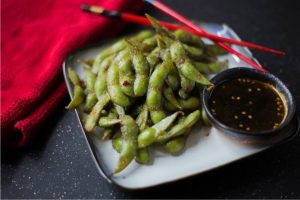VEGAN RECIPES
Exploring the Rich Diversity of Asian and European Vegan Recipes
As the world continues to embrace the benefits of a plant-based lifestyle, vegan cuisine has evolved from a niche diet to a mainstream choice for many. Whether driven by health concerns, environmental impact, or ethical considerations, the demand for vegan recipes has surged, leading to a rich and varied tapestry of culinary traditions. In this column, we delve into the world of Asian and European vegan recipes, uncovering the unique flavors, ingredients, and traditions that define vegan cuisine across these two diverse regions.
The Essence of Asian Vegan Cuisine
Asian cuisine is a treasure trove for those seeking flavorful and diverse vegan dishes. Rooted in ancient traditions and influenced by a deep respect for nature, many Asian diets naturally incorporate a wide variety of plant-based foods. In countries like India, where a significant portion of the population practices vegetarianism, vegan dishes are abundant. The use of lentils, chickpeas, and an array of spices creates dishes that are both hearty and satisfying. Indian vegan recipes like dal, vegetable curries, and biryani are not only delicious but also rich in protein and essential nutrients.
Moving eastward, Chinese, Japanese, and Thai cuisines offer a different yet equally enticing array of vegan options. Tofu, a staple in many Asian diets, is a versatile ingredient that can be found in countless dishes, from stir-fries to soups. In China, dishes like Buddha’s Delight showcase the simplicity and elegance of vegan cooking, combining a variety of vegetables and mushrooms in a light, flavorful sauce. In Japan, vegetarian sushi, made with fresh vegetables and seasoned rice, highlights the clean and delicate flavors that define Japanese cuisine. Thai vegan recipes often feature coconut milk, lemongrass, and chili to create bold and vibrant dishes that are both satisfying and packed with flavor.
European Vegan Cuisine: Tradition Meets Innovation
In contrast to Asia, where plant-based diets have been a part of the culinary landscape for centuries, Europe’s vegan movement is relatively new but rapidly growing. European vegan cuisine is a fascinating blend of tradition and innovation, where classic dishes are reimagined to fit a plant-based lifestyle.
Countries like Italy and Greece, known for their rich culinary traditions, have long embraced the use of vegetables, grains, and legumes. In Italy, dishes like pasta al pomodoro or risotto with wild mushrooms are naturally vegan, showcasing the country’s commitment to simple, high-quality ingredients. Greek cuisine offers dishes such as fasolada (bean soup) and spanakopita made with spinach and vegan-friendly phyllo dough, reflecting the Mediterranean diet’s reliance on fresh vegetables and olive oil.
In Northern Europe, the vegan movement has sparked creativity, leading to innovative plant-based versions of traditional dishes. For example, vegan versions of German schnitzel or Swedish meatballs use plant-based proteins like seitan or soy to recreate the textures and flavors of these beloved classics. The emphasis on sustainability and local sourcing in Scandinavian countries has also led to a resurgence of interest in foraging, with wild herbs, mushrooms, and berries playing a central role in many vegan dishes.
The Health and Environmental Benefits of Vegan Cuisine
Beyond the diverse flavors and cultural significance, vegan cuisine offers substantial health and environmental benefits. A well-planned vegan diet is rich in essential nutrients such as fiber, vitamins, and antioxidants, contributing to overall health and well-being. By focusing on whole foods like vegetables, fruits, legumes, and grains, vegan diets can help reduce the risk of chronic diseases, including heart disease, diabetes, and certain cancers.
From an environmental perspective, adopting a vegan lifestyle can significantly reduce one’s carbon footprint. The production of plant-based foods generally requires fewer resources, such as water and land, compared to animal-based products. By choosing vegan options, individuals can contribute to a more sustainable and eco-friendly food system.
Conclusion: A World of Vegan Possibilities
Whether you’re exploring the bold flavors of Asian cuisine or the innovative twists of European dishes, vegan recipes offer endless possibilities for delicious and nutritious meals. The diverse culinary traditions of Asia and Europe provide a rich foundation for creating plant-based dishes that are both satisfying and sustainable. As more people discover the benefits of vegan food, the global landscape of vegan cuisine will continue to grow, offering new and exciting flavors for everyone to enjoy.
- 1
- 2










